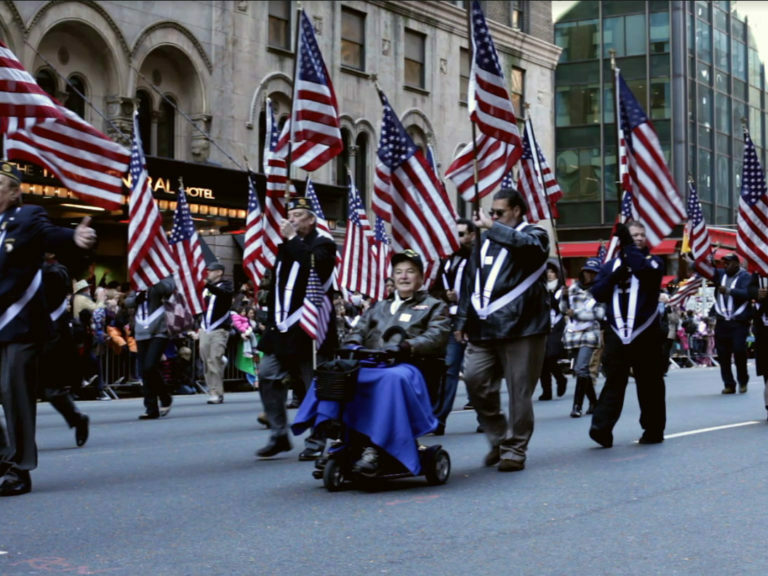With an overall buying power of $1.3 trillion, the military audience in the United States is not one that brands should be ignoring. And while we often talk about advertising to the military community overall, today we want to focus on a crucial segment within this audience: the military family.
Military families function a bit differently than your average family, and they’re important to understand when you’re advertising to the military. Military spouses have over $50M in spending power and Spouses spend more than the general population on food/groceries (by 31%), clothing and shoes (by 43%), and household furnishings (by a whopping 79%) per Refuel Military Explorer™ research.
And while military spouses and children identify strongly with the military community, they also display key differences that brands need to understand. So, here’s how to advertise to military families—from the team that’s been doing it for 30 years.

Read next: 4 Secrets You Didn’t Know About US Army Advertising
1. Understand the military family
The first step in executing a successful advertising campaign to military families is understanding who they are—and that’s where the team at Refuel comes in. We’ve been conducting proprietary research on the military community to understand who military families are, how they live their lives, what kind of media they consume, and how they prefer to be communicated with.
First, let’s talk numbers. Of the 27.2 million members of the military community overall, 1.6 million of them are military spouses and children. The average age of the military spouse married to enlisted personnel is 30.4 years old and those married to officers is 36.6 years old. We also know that over half of current military members are currently married, and the average age of the birth of a military family’s first child is 24.
These numbers are significant and help paint a picture of who the military family is—and that family is a priority. Military members are settling down at a fairly young age and establishing families. Military families heavily identify with their community and 82% of military members have a strong connection to VSOs and military associations
There are over 100 VA-recognized, national Veterans Service Organizations (VSOs) and VA works most closely with the following organizations: The American Legion, Veterans of Foreign Wars, Disabled American Veterans, Paralyzed Veterans of America, AMVETS, and Vietnam Veterans of America.
Read next: How to Create Veterans Day Ads That Stand Out
2. Avoid stereotypes to create authentic messaging
One of the biggest challenges brands run into when creating their military advertising campaigns is that there is often a significant knowledge gap between marketers and the military community. This can lead to military marketing campaigns that come off as self-serving, misrepresent the military community, and ultimately fall flat.
As a marketer, you know that stereotypes are never a good marketing strategy for many reasons, and can lead to alienating or offending your target audience. Challenge the military stereotypes that you might carry with you.
It’s also important to remember that the military is not a homogenous group of people—on the contrary, the military community is more diverse than it has ever been. According to Refuel’s Military Explorer Series™, 17% of active duty and 20% of guard/reserve military are women. And since 2010, the military community has become 20% more multicultural.
Challenge your assumptions about the military in order to avoid military advertisements that fail to resonate with military families and the diverse community they represent.
Read next: How to Advertise Your Brand During Military Appreciation Month
3. Advertise on-base and use military print
We know that military families frequent base facilities and services and read military print. In fact, on-base advertising and military print are the most trusted media sources by the military community.
According to Refuel’s Military Explorer Series™, 59% of military spouses expressed that they have a deeper connection with a brand when they see their ads on-base versus off-base. Additionally, military spouses expressed that they were more likely to try the products advertised on-base, as well as recommend those products to others.
And in terms of on-base magazines, military newspapers, and military OOH ad results, upwards of 90% of military spouses took action after seeing these ads. Additionally, you can show your appreciation to military personnel and earn brand loyalty by offering military discounts. Refuel Agency’s Military Explorer Series™ showed that the military community is more likely to be loyal to brands that offer military discounts—41% of military spouses were more likely to be loyal to brands that offer discounts.
On-base military advertising, military print advertising, and military discounts are extremely effective and will play a vital role in your campaigns targeting military families.
Read next: Military Discounts Drive Brand Loyalty. Here’s How to Implement Yours
Looking to find out how to reach the military audience? The best military advertising strategy includes a mix of detailed consumer data sets, targeted media placements, customized creatives, research, and partnership leverage that can help your message make an impact. You can find out more here. At Refuel Agency, we’ve specialized in military advertising for over 30 years, and we can create a personalized, targeted media plan to win over the military audience strategically. Learn more about our military marketing solutions, or contact us for your customized media and marketing plan.




